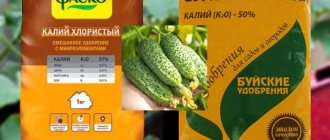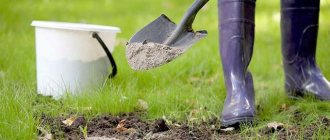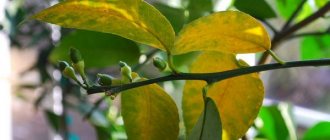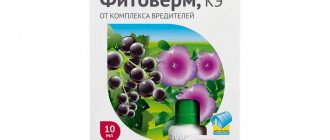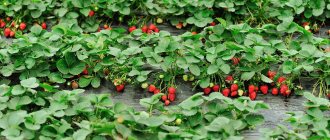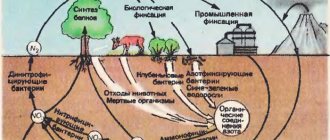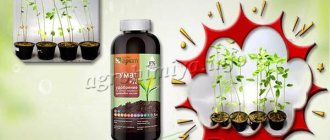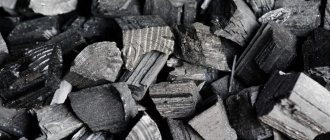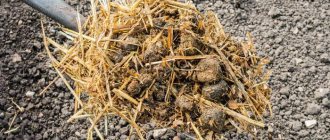Benefits of Charcoal
For good fertility and productivity, fertilizer from burnt wood is used.
The result is a universal fertilizer, top dressing containing phosphorus, potassium, boron, calcium, a complex of minerals that plants and shrubs need for full growth. Coal can be used for small and large garden crops. Gardeners often feed trees, berries, and fruit plantings with burnt wood. The benefits of feeding include:
- light weight, the fertilizer is easy to carry, store and use (due to its porous structure);
- the minimum amount of fertilizing is enough for a large number of crops;
- much more profitable than purchasing chemical fertilizer;
- can be applied to the ground for several years in a row;
- do not pose a danger to humans and animals (there is no risk of infection or poisoning).
Wood was used for a long time as fertilizer in fields and large gardens. Gardeners note that plants fed with ash tolerate cold much better and are not afraid of excessive moisture and drought. The positive properties of charcoal as a top dressing include the inability to overdo the dosage. If other fertilizers can harm the crop if used excessively, then ash will not have a negative effect even with frequent use.
It has been proven that plants sprayed with infused water with the addition of ash are much less susceptible to rotting and mold. Crops fed with wood ash do not suffer from fungal diseases. Harmful insects avoid plantings sprinkled with coal.
The benefits of charcoal in agriculture
Charcoal as a fertilizer for plants in fields has become widespread relatively recently. Agronomists note that its use improves plant fertility and also helps plantings withstand drought more easily.
The following advantages of this fertilizer can be highlighted:
- Environmentally friendly - the product is absolutely harmless to both animals and people.
- Frequency of use – the ability to apply it to the soil for several years without interruption.
- Availability – the cost of coal is much cheaper than chemical fertilizers.
- High porosity – low weight of the substance and a minimum amount for feeding large areas.
Plants treated with coal ash infusion are less susceptible to fungal diseases and pest attacks.
Coal as a soil moisture regulator
What makes this wood fertilizer unique is its ability to absorb water. By absorbing excess moisture, plant roots are protected from rotting during rainy seasons. During drought, particles of wood material return accumulated moisture to the soil. Thus, activated carbon in gardening corrects soil moisture.
In addition to moisture, useful microelements accumulate on the baked shell of the coal product over time. They additionally nourish the root system of the plantings, increasing the looseness of the soil and improving its quality.
Protecting your garden from pests
To protect plantings from pests and various diseases, you can use an infusion of wood ash. The solution is famous among opponents of the use of “chemicals” on their plots. Brown coal as a fertilizer is effective in combating fungus (powdery mildew, blackleg, gray mold) and against pest invasion.
Prepare the solution as follows:
- 300 g of wood ash is poured into 2 liters of boiling water.
- Boil the mixture for 30 minutes.
- Add water in the amount of 8 liters.
- Pour a little tobacco ash into the infusion along with 50 g of laundry or tar soap.
Garden plants should be sprayed with a soap-ash solution in the evening. It will protect plantings from wireworms, Colorado potato beetles, slugs, aphids, whites, mites, ants and various midges. The drug will save berry bushes from sawfly and powdery mildew.
To protect cabbage, treatment with dry ash is recommended. The powdering method will ensure the safety of the plant from slugs and small fleas. This method of feeding is environmentally friendly - eating the fruits of treated plants is completely safe.
Properties of activated carbon
In floriculture, as in medicine, activated carbon is used as an absorbent that collects all toxic substances. It is hygroscopic, that is, it absorbs excess water and moisture well.
Has a good disinfecting effect. By the way, this is why it is recommended to sprinkle fresh plant cuts with activated carbon. The plant will not be affected by fungi or mold.
The listed main properties of this drug also form the basis of fertilizers, which experienced gardeners consider effective, but not harmful to the flower.
Video of the benefits of activated carbon
For a long time, activated carbon has been the most famous and accessible adsorbent and disinfectant. This property is directly related to the high surface activity of the drug, its ability to bind toxins, heavy metal salts, gases and other harmful substances. These beneficial qualities make it possible to use activated carbon not only to maintain human health, but also for indoor plants.
How is activated carbon useful for flowers and seedlings:
- When fertilizing, it helps us make the soil more neutral.
- It absorbs harmful gases and metals.
- It takes away excess moisture from the soil. This is especially important for our small, immature plants.
- It can be used to disinfect flower cuttings or seedlings.
- It is also good to add activated carbon to water for rooting cuttings. It prevents putrefactive processes from developing.
- You can sprinkle the roots of plants when replanting. This will help keep them from rotting and protect them from diseases in the cut areas.
- It is good to prevent and treat “black leg” on seedlings (fungal disease).
What flower problems can be solved with activated carbon?
The drug prevents the appearance of “black leg” and increases the number of rooted cuttings. This occurs due to the properties of absorbing excess moisture and preventing the proliferation of microorganisms and stimulating root formation.
Water in which pharmaceutical charcoal is dissolved remains fresh for a long time. If you add a couple of tablets to the water in which the bouquet stands, the flowers will not wither for a long time.
Are the flower leaves withered and drooping? Feed the plant with activated carbon at the rate of 2 tablets per large adult plant, and it will regain its former freshness and elasticity. You can scatter the crushed preparation over the surface or dissolve it in water and pour it over.
Activated Carbon for Soil Health
The absorbing properties of activated carbon can be successfully used in a summer cottage. By feeding plants with this substance, you will simultaneously solve several problems:
- reduce soil acidity;
- reduce the amount of heavy metals and hazardous chemical compounds in the soil;
- feed the plants: the starch contained in activated carbon will appeal to almost all crops. But for greater efficiency, it is still better to use potato peelings.
You can add tablets or coal powder to water for irrigation. It is also effective to dig the tablets directly into the soil. When dry, they will absorb excess moisture and reduce the likelihood of root rotting. This is especially important for seedlings recently planted in open ground. There is no need to add too much coal so as not to change the quality of the soil.
Activated carbon for water purification
Activated carbon is actively used in water filters. It allows you to clean it from impurities and unpleasant odors. In country or camping conditions, coal can also be useful for water purification. Wrap several tablets of the substance in gauze and place at the bottom of a glass container with water. The larger the container, the more coal you should take. After 12 hours the water will become clearer.
Place the container with coal in a cool room, otherwise the number of bacteria in the water will increase.
Activated carbon will help out in a variety of situations. With its help, you will not only neutralize the effects of toxins in case of poisoning, but also protect seedlings from blackleg, reduce soil acidity, get rid of mold in flower pots, and protect plant cuts from rot. Feel free to use this drug in the country and at home. And if you have your own recipes for using coal in the garden or flower garden, share them in the comments!
Useful properties of coal for plants
Black tablets help the gardener solve a number of problems that arise when caring for house plants.
The drug will help you:
- reduce the amount of toxic chemical compounds in the soil;
- speed up the process of root formation in cuttings;
- get rid of fungal diseases, as the product absorbs excess moisture, preventing the proliferation of pathogens;
- destroy mold in a flower pot;
- protect the soil surface from midges, preventing them from laying eggs;
- purify water for irrigation from heavy metal salts.
Let's take a closer look at some ways to use charcoal for indoor plants.
Flower food
Activated carbon is a highly effective natural fertilizer; it enriches the soil mixture for home flowers with useful microelements. Its use has a beneficial effect on plants: they develop better, bloom more luxuriantly, and get sick less.
Experts recommend adding tablets to the soil when planting those plants that react painfully to waterlogging - cacti, palm trees, violets.
The product absorbs all unpleasant odors, absorbs excess moisture, giving it to the roots as needed. Thus, the tablets create favorable conditions for flower growth.
Activated carbon against mold on soil
You can take a few tablets, crush them in a spoon and sprinkle them on the soil where mold has formed.
Reducing soil acidity
Hard water for irrigation, fertilizers, pest control preparations, and plant waste lead to the appearance of harmful salts and toxins in the soil. Coal will cleanse the soil of toxic components that seriously deteriorate the condition of your plants.
Most indoor flowers prefer soil with neutral acidity levels. To bring acidity back to normal, when planting, add 2-3 powdered tablets to the soil mixture. Please note that there are plants that require acidic soil; in this case, the use of tablets is not recommended.
Prevention and treatment of “black leg” on seedlings
This is a rather dangerous fungal disease that affects seedlings. The root collar rots and turns black, then the seedlings fall and die. To protect your seedlings from such an insidious enemy, you need to sprinkle the soil with activated carbon. If the seedlings are already sick, the affected plants are thrown away and the soil is sprinkled with activated carbon.
Activated carbon for rooting cuttings
Plant cuttings are defenseless against fungi and infections, so it is worth protecting them from diseases using activated carbon. Add a few crushed tablets to the container where the plants are located and add water as needed. Charcoal is also an excellent alternative to root-forming preparations, because thanks to it, cuttings take root faster and take root better.
Treatment of plant cuts with activated carbon
When working with plants, you often have to deal with such procedures as pruning, dividing, and removing damaged parts. After it, it is very important to disinfect the sections so that putrefactive processes do not begin. If there are no special preparations at hand, activated carbon will help out. Sprinkle the fresh cut thickly with it, without rubbing, and leave it on the plant.
Activated carbon can also be sprinkled on the roots of plants during replanting.
Mulching with charcoal. Charcoal: how to obtain fertilizer
When talking about charcoal, first of all you need to understand what it is.
First of all, these are black wood residues obtained by slow (cold) combustion with minimal access to oxygen. The substance obtained in this way has many positive properties, which include:
- chemical inertness (thanks to this, it can lie in the ground for a thousand years without decomposing at all);
- high absorption properties (the ability to absorb excessive amounts of aluminum oxides or ordinary water);
- high porosity (resulting in a huge surface area).
In addition, when it gets into the soil, charcoal as a fertilizer is able to retain nitrogen from the air, converting it into forms accessible to crops. It also plays the role of a catalyst for the vital activity of the biosphere of the humus layer.
Did you know? The Indians of Peru were the first to figure out how to use charcoal in the garden. It was they who began to add it to the ground, having previously obtained it by burning trees growing in the jungle.
Over time, soil scientists from around the world came to the conclusion that it is coal that makes the infertile soils of Peru suitable for growing various crops. However, they also did not know that at a combustion temperature of 400-500 degrees (and it was under such conditions that the Indians burned forests), the resins of the wood used did not burn, but hardened and covered the pores of the charcoal with a small layer.
Such resins have a high ability for ion exchange, since an ion of any substance is easily connected to them, after which it is very difficult to wash it out (even in conditions of heavy rainfall). At the same time, plant roots or hyphae of mycorrhizal fungi absorb it well.
Disinfection
Activated carbon is used as a pest control agent in the following cases:
- Reducing soil acidity for seedlings. Flower growers are attentive to the preparation of soil for seedlings, since it largely determines whether they will be able to grow new flowers from seeds. Most seedling mixtures are based on peat, which increases the acidity of the soil. Tablets help solve this problem. They also normalize soil moisture, preventing the development of putrefactive processes in the roots of seedlings.
- Disease and pest control. The drug is indispensable in the fight against “blackleg,” a very common disease. At the slightest suspicion of its occurrence, remove diseased seedlings and sprinkle the area with coal powder. For prevention, you can cover the entire surface of the soil in the seedling container with powder.
- Disinfection during reproduction. When selecting cuttings and removing damaged roots when transplanting flowers, flower growers use a sharp knife. It is important to disinfect the cut areas to prevent further infection. Activated carbon powder does an excellent job of this; it destroys pathogenic bacteria and accelerates the healing of flower tissue.
Soil for seedlings with activated carbon
Since coal perfectly absorbs moisture and protects the soil from rot, it can also be used to prepare seedling soil. For one container, 1-2 crushed charcoal tablets or 250-500 mg of powder are enough.
- Soil for seedlings - how to prepare the right mixture for young plants. Seedlings of tomatoes, peppers, eggplants, cucumbers and cabbage will be strong and healthy if grown in the right substrate.
Tricks for using activated carbon for flowers and plants
1. Activated Carbon for Soil Health
The absorbing properties of activated carbon can be successfully used in a summer cottage. By feeding plants with this substance, you will simultaneously solve several problems:
reduce soil acidity; reduce the amount of heavy metals and hazardous chemical compounds in the soil; feed the plants: the starch contained in activated carbon will appeal to almost all crops. But for greater efficiency, it is still better to use potato peelings.
You can add tablets or coal powder to water for irrigation. It is also effective to dig the tablets directly into the soil. When dry, they will absorb excess moisture and reduce the likelihood of root rotting. This is especially important for seedlings recently planted in open ground. There is no need to add too much coal so as not to change the quality of the soil.
2. Activated carbon for rooting cuttings
Plant cuttings are defenseless against fungi and infections, so it is worth protecting them from diseases using activated carbon. Add a few crushed tablets to the container where the plants are located and add water as needed. Charcoal is also an excellent alternative to root-forming preparations, because thanks to it, cuttings take root faster and take root better.
3. Soil for seedlings with activated carbon
Since coal perfectly absorbs moisture and protects the soil from rot, it can also be used to prepare seedling soil. For one container, 1-2 crushed charcoal tablets or 250-500 mg of powder are enough.
4. Treatment of plant sections with activated carbon
When working with plants, you often have to deal with procedures such as pruning, dividing, and removing damaged parts. After it, it is very important to disinfect the sections so that putrefactive processes do not begin. If there are no special preparations at hand, activated carbon will help out. Sprinkle the fresh cut thickly with it, without rubbing, and leave it on the plant.
This is interesting:
You won't find a better medicine
Activated carbon can also be sprinkled on the roots of plants during replanting.
5. Activated carbon to combat fungal plant diseases
We have already said that coal perfectly absorbs moisture and does not allow pathogenic microflora to multiply. Therefore, it is also effective in combating fungal diseases, but only at the initial stage of their development or as a prophylactic agent. This is especially true for seedlings, which are often affected by blackleg - rot of the root collar of seedlings.
It is not easy to save plants, so at the first sign, immediately sprinkle the soil with crushed activated carbon. It is better to throw away the diseased plant to stop the epidemic, and also sprinkle the planting site with coal. If possible, plant the seedlings in separate containers with disinfected soil.
6. Activated carbon against mold in flower pot
Flower lovers often encounter such a problem as mold in a flower pot. This is usually caused by overwatering and high indoor humidity. If you need to do something urgently, crushed activated carbon will come to the rescue. First, remove the layer of moldy soil, and then sprinkle the soil thickly with coal. After a few days, the coal should be replaced with fresh one.
Activated carbon needs to be crushed; whole tablets are not suitable, because... they can provoke the appearance of mold by actively absorbing water from the surface. Always try to crush the coal when you sprinkle it on the soil.
This is interesting:
What does our name give us - happiness or failure? Numerology: fortune telling by numbers
7. Activated carbon for feeding indoor plants
Activated carbon can also be used to feed flowers. Many gardeners note that after using it, plants develop and bloom better. All this is thanks to the disinfecting properties of coal, which inhibits the development of dangerous bacteria and fungi, reduces soil acidity, and removes excess moisture.
For one pot you will need 1-2 tablets of coal. First, break them into 2-4 parts and dig into the soil. Do not leave them on the surface, otherwise they may become moldy. Observe the plant, if all is well, feed other green pets in the same way.
8. Activated carbon against midges
Sometimes you can find midges in pots with flowers and seedlings. Often they simply fly into a house from the street, sometimes they end up with contaminated soil or on fruits and vegetables. It is very difficult to fight midges; they multiply quickly. They like moist, acidic soil. They lay eggs in it, from which voracious larvae hatch, feeding on the roots. As a result, the plant quickly weakens and may die.
There are many means to combat midges, and activated carbon in this case does not kill insects, but only becomes some kind of barrier to their reproduction. Sprinkle the soil in the pot with a thick layer of crushed tablets and the adults will no longer be able to lay eggs in it. In addition, the acidity and moisture of the soil will decrease. Of course, it is better to complement this method with others, but it will have a positive effect.
This is interesting:
Methods of instant energetic help to yourself
9. Activated carbon - an ambulance for a summer resident
If you have been bitten by a mosquito at your dacha or have scratched your skin, try to relieve the pain with activated charcoal. Grind it and gently apply it to the site of the bite or abrasion. You will soon notice that the discomfort has decreased and the swelling has disappeared.
Various chemicals are often used in the country. If pesticide is accidentally ingested, use activated charcoal immediately. Drink several glasses of water with a suspension of coal (1 g per 1 kg of body weight) and induce vomiting. Repeat the procedure if necessary, and then drink a glass of charcoal water as directed and consult a doctor immediately.
10. Activated carbon for water purification
Activated carbon is actively used in water filters. It allows you to clean it from impurities and unpleasant odors. In country or camping conditions, coal can also be useful for water purification. Wrap several tablets of the substance in gauze and place at the bottom of a glass container with water. The larger the container, the more coal you should take. After 12 hours the water will become clearer.
Place the container with coal in a cool room, otherwise the number of bacteria in the water will increase.
Activated carbon will help out in a variety of situations. With its help, you will not only neutralize the effects of toxins during poisoning, but also protect seedlings from blackleg, reduce soil acidity, get rid of mold in flower pots, and protect plant cuts from rot. Feel free to use this drug in the country and at home.
Making fertilizer from coal
There are several ways to feed plants using activated carbon:
- Dry feeding. This is one of the common methods. The bottom line is that one tablet needs to be divided into 2-4 parts and buried in the ground about 0.5-1 cm. For a small pot, 1.5-2 tablets are needed.
- Hidden feeding. Used to reduce water hardness. To do this, two tablets of coal are dissolved in 500 ml of water, and the plant is watered with this solution. This method also prevents the development of fungi in the soil.
- Reusable feeding. This method should be used if fungus or mold has already developed in the soil of the flower pot. To reduce the likelihood of root rotting, whole tablets should be laid out on the surface of the ground at equal distances from each other (3-4 pieces for a medium-sized pot). Then cover the pot with a thin cloth and leave for 6-8 hours. Then repeat the procedure 2-3 times. This method will lead to the complete collection of excess water both from the surface of the earth and from the depths, which will reduce the likelihood of rotting roots and stems to a minimum.
When talking about gardening and the benefits of coal for plants, it should be said that this substance is no less useful for humans. The illustration for the article is taken from open sources
How to use activated carbon for plants
- Improving Soil Quality Adding charcoal directly to the pot reduces the acidity and salinity of the soil, making the soil neutral. The pharmaceutical product absorbs harmful chemicals, excess liquid, heavy metals from the soil, and prevents the development of pathogenic microbes
- Processing cuts Charcoal is completely safe and perfectly disinfects cuts after trimming plants. This method allows you to avoid the appearance of rot and infection of plants without the use of special preparations. Just grind a few tablets in a mortar and sprinkle on cut areas or damage that appears on the roots, stems, and leaves.
- Rooting cuttings Cuttings will take root well, quickly take root and will not rot if you dissolve the powder of 2 tablets of activated carbon in a container of water.
- Fighting fungus Charcoal effectively eliminates fungus at the very beginning of its development, so you need to act quickly to save the plant. First, remove the layer of moldy soil, and then sprinkle the ground thickly with charcoal powder. After 3 days, remove the layer of coal and sprinkle the soil with freshly crushed powder.
- Saves from “black leg” “Black leg” is a dangerous fungal disease that affects young, weak seedlings. The affected stems near the surface of the earth darken, become thinner, and the plant dies. After germination, sprinkle the entire surface of the soil with a layer of activated carbon powder. The substance absorbs moisture and prevents pathogenic microflora from multiplying.
- Soil for seedlings If you mix ground activated carbon with soil when transplanting plants into a new container, this will prevent the occurrence of rot and fungal diseases. For one container, 2 tablets will be enough.
- Plant nutrition Green pets will begin to grow and bloom noticeably better if they are fed with activated carbon. Break 2 tablets into 4 parts and dig into the soil to a depth of 3-4 cm. Plants really “like” the starch in the tablets.
- Anti-midge remedy Sometimes you can find midges in pots with flowers and seedlings.
Unpleasant neighbors enter the house from the street, along with contaminated soil or on fruits and vegetables. They love moist, acidic soil and multiply quickly in it: voracious larvae hatch from eggs laid in the soil and begin to eat the roots. As a result, the plant soon weakens and may even die. To get rid of midges , sprinkle the soil in the pot with a thick layer of crushed tablets. Although coal does not kill insects, it does prevent their reproduction by reducing the acidity and moisture of the soil.
Activated carbon for feeding indoor plants
Activated carbon can also be used to feed flowers. Many gardeners note that after using it, plants develop and bloom better. All this is thanks to the disinfecting properties of coal, which inhibits the development of dangerous bacteria and fungi, reduces soil acidity, and removes excess moisture.
For one pot you will need 1-2 tablets of coal. First, break them into 2-4 parts and dig them into the soil. Do not leave them on the surface, otherwise they may become moldy. Observe the plant, if all is well, feed other green pets in the same way.
Activated carbon - first aid for summer residents
If you have been bitten by a mosquito at your dacha or have scratched your skin, try to relieve the pain with activated charcoal. Grind it and gently apply it to the site of the bite or abrasion. You will soon notice that the discomfort has decreased and the swelling has disappeared.
Various chemicals are often used in the country. If pesticide is accidentally ingested, use activated charcoal immediately. Drink several glasses of water with a suspension of coal (1 g per 1 kg of body weight) and induce vomiting. Repeat the procedure if necessary, and then drink a glass of charcoal water as directed and consult a doctor immediately.
Activated carbon for rooting cuttings
Plant cuttings are defenseless against fungi and infections, so it is worth protecting them from diseases using activated carbon. Add a few crushed tablets to the container where the plants are located and add water as needed. Charcoal is also an excellent alternative to root-forming preparations, because thanks to it, cuttings take root faster and take root better.
Activated carbon against midges
Sometimes you can find midges in pots with flowers and seedlings. Often they simply fly into a house from the street, sometimes they end up with contaminated soil or on fruits and vegetables. It is very difficult to fight midges; they multiply quickly. They like moist, acidic soil. They lay eggs in it, from which voracious larvae hatch, feeding on the roots. As a result, the plant quickly weakens and may die.
There are many means to combat midges, and activated carbon in this case does not kill insects, but only becomes some kind of barrier to their reproduction. Sprinkle the soil in the pot with a thick layer of crushed tablets and the adults will no longer be able to lay eggs in it. In addition, the acidity and moisture of the soil will decrease. Of course, it is better to complement this method with others, but it will have a positive effect.
How to prepare fertilizer?
The simplest method is the following: the tablets need to be poured in half, or into several small parts (for convenience) and buried three centimeters into the ground. For one flower you will need only two tablets of this popular medicine.
Note! The coal needs to be buried. If you just leave it on the surface, then the pieces of tablets may become moldy due to excess moisture. The second method is the so-called “raw” feeding.
Dissolve one tablet in a glass of water (200-250 ml) and pour the mixture over the plant. According to experts, this is far from the most effective method, but with its help you can quickly improve the condition of house plants and bring them into proper shape. But there is one more nuance - the method is not suitable for all plants.
How to add charcoal and ash
On different types of soil, fertilizer made from wood ash and coal is used in different dosages. Coal has high absorption rates, due to which it absorbs various elements well, for example, aluminum, which negatively affects the condition of the soil and plants.
Charcoal is produced through slow combustion with limited access of oxygen, so it has high porosity and can lie in the soil without decomposing for several thousand years. It retains all the resins that enrich the soil and make it fertile.
In addition, charcoal is known for its antiseptic properties, as a result of which it is often used in floriculture.
Add to pots with indoor flowers to increase oxygen access or use as drainage. When transplanting plants, crushed charcoal is sprinkled on the roots, which avoids damage by fungi and rot. In the garden, the use of such fertilizer can significantly increase crop yields and improve soil fertility.
- Application is not always possible, since it shifts the pH balance to the alkaline side. And most plants prefer neutral or slightly acidic soils. You should not apply charcoal to plants such as cranberries and blueberries. They do not tolerate alkaline soils, but prefer acidic ones.
- It is better to add coal in crushed form. Then the fertilizer is easier to dose and its use will have a better effect. But it is also possible to add coal in its entirety. In the form of ash, 1 - 3 cups per square meter of area is usually used. The norm for cabbage is two glasses. For cucumbers, garlic, peas, beans and salad, one glass each, and for eggplants, peppers and tomatoes, three glasses each.
- Wood ash as a fertilizer shows better results when applied than in pieces. Ash creates favorable microbiological conditions for the development and activity of microorganisms in the soil.
- To add coal, it must first be dried, then the microelements it contains will be in higher concentrations.
- During storage, it is necessary to protect the fertilizer from any exposure to moisture, otherwise it will lose some of the nutrients.
The use of coal in the garden will not only enrich the soil with necessary micro- and microelements, but will also help increase the humus layer. And if the addition of coal is carried out in an uncrushed form, it will also play the role of drainage, which improves the saturation of the soil with oxygen, prevents stagnation of moisture in it, and therefore has a beneficial effect on plants.
Scientists have proven that in areas where charcoal was applied together with mineral fertilizers, crop yields increased three times, compared to areas where only fertilizers were used.
Activated carbon is used in various areas of our lives. This is not ordinary coal, but produced using a special technology, when, as a result of processing organic raw materials, the pores in it open. Thanks to this, activated carbon becomes a good adsorbent, perfectly absorbs moisture and absorbs various chemicals. Most often used in medicine, in household and industrial filters for purifying water, air, etc. This product is also often used in gardening.
What can be used as drainage
To lay drainage, you can use materials such as gravel, expanded clay, crushed stone, broken brick, peat, charcoal, river sand, polystyrene foam or any synthetics. An important quality of the drainage layer for indoor plants is good moisture permeability, inertness to chemicals, resistance to rotting and mold.
Drainage has different fractions, which are selected depending on the flower.
Expanded clay for flowers
A material with a porous structure, expanded clay, is baked clay. It is used in construction as an effective sound insulator and insulation. In floriculture, fine- and medium-fraction expanded clay is used. The main advantages are lightness and ability to absorb water. When the earthen ball dries out, the material releases moisture back into the soil.
Expanded clay is a chemically neutral, odorless material. It can be used several times. After about 6 years it crumbles into the ground. For drainage of large indoor plants, medium-fraction expanded clay (diameter 2 cm) is suitable. It is important that the size of the hole at the bottom of the pot is smaller than the fraction of the material. The optimal height of the drainage layer is 2 cm. If you are using a container without holes, then the expanded clay layer should be 5 cm. Sprinkle sand on top.
Layer of expanded clay in a pot
Ceramic shards
Pieces of ceramics will serve as a good drainage material for indoor flowers. Place several small shards or large pieces with the convex side up on the holes in the pot. Pour 1.5 cm of purified coarse sand on top into a small container, and 5 cm into a large container. The disadvantage of the material is the risk of damage to the roots by the sharp sides of the shards. You should not use pieces of ceramic that are too large, as sand will spill through them.
Ceramic shards
Perlite and vermiculite
The material vermiculite is produced by heating clay to high temperatures. As a result of heat treatment, minerals are pressed together, forming flakes. In appearance, vermiculite resembles wood or cork shavings. It is light, inert, and does not harm indoor plants.
Perlite is elastic silica of volcanic origin. It appears as white or gray granules. Both materials are capable of absorbing moisture with mineral and organic substances. They return water back to the soil as needed. The disadvantage of this type of drainage is its high cost.
Perlite and vermiculite
Sphagnum moss
Many gardeners use pure sphagnum moss as a drainage material. This natural drainage holds water well and releases it to dry soil. In addition, it has disinfecting properties. Moss grows on moist, swampy forest soils. It consists of soft stalks of light green light, from which the same soft needle-like leaves grow to the sides.
Sphagnum moss can be harvested in any season, but it is preferable to do it in the fall: this way it will better retain moisture during transportation. Before laying the drainage, the moss is filled with warm water (temperature about 45 degrees). This procedure saturates the material with moisture and gets rid of possible insects.
Store moss in the refrigerator or freezer. The material is first placed in a plastic bag, but not tightly closed to allow air access. It is important to note that when defrosted, moss does not lose its beneficial qualities. The only disadvantage of the material is its inaccessibility. It is not always available in flower shops, and getting to the forest for it is not always possible.
Sphagnum moss
Charcoal
Charcoal drains the soil well for indoor plants. It functions as a natural fertilizer and antiseptic. Charcoal prevents putrefactive processes, adsorbs salts, and regulates soil moisture saturation. Charcoal drainage also absorbs and retains water and minerals well.
Charcoal is a neutral, inert, lightweight and porous material. For drainage, it is laid out on the bottom of the planting container in a two-centimeter layer. It is advisable to take large fractions or such that they do not pass through the holes of the pot.
Charcoal drainage in a pot
Crushed stone and gravel
Good drainage for flowers is obtained from medium-sized fractions of crushed stone and gravel. These materials are perfect for small pots with indoor plants that are rarely replanted and moved from place to place. The main disadvantage of crushed stone and gravel is their heavy weight.
Gravel for turf
Broken brick
Broken clay brick is another option for good drainage for flowers. During production, various additives are added to the clay to improve its quality, and then fired. As a result, the natural material is strong and absorbs moisture well.
The main disadvantage is the sharp edges of broken bricks, which can damage the roots of a houseplant. It is better to sharpen the pieces a little before storing them. Instead of red ceramic brick, you can use silicate brick. It has more pronounced drainage properties.
Broken brick
Foam drainage
Foam can be used as a drainage layer. In every home there is at least one box of household appliances containing this material. Polystyrene foam is lightweight, does not absorb water, does not decompose, does not deform, is non-toxic, and has no odor. It is good to use in heavy ceramic flowerpots.
Excess moisture flows down the foam into the tray. To lay drainage, the material is cut into cubes and placed on the bottom in a layer of 2 cm. The disadvantage of polystyrene foam is that over time, the roots of indoor plants entwine the material. In view of this, when replanting there is a danger of damaging the root system.
Polystyrene foam as drainage
Sea or aquarium stone
An alternative to crushed stone and gravel is small sea or aquarium stone. It is great not only as a drainage layer in a pot, but also for decorating the soil of a houseplant. The only thing that can discourage a gardener from purchasing such drainage is the high price.
Sea stones as drainage for a flower
Where to buy
It is better to purchase coal used in growing a home greenhouse in specialized stores. There it is sold in small volumes, in waterproof packaging. The opened package must be poured into a container where the coal will be stored without access to moisture. It is most reliable to use a jar with a screw cap, in which it is useful to put a couple of silica gel bags (these bags are placed in the shoe box). When in contact with atmospheric air, coal loses most of its valuable properties.
You can replace charcoal with activated charcoal, which is sold in pharmacies. Charcoal used to light fireplaces or barbecues has similar properties.
Method of production and action of activated carbon
Activated carbon does not occur in nature. It is obtained artificially from an organic substrate, which can be wood, coconut shells, or animal bones. The resulting activated carbon is safe for the environment, as it does not contain harmful additives or antibiotics. On the contrary, due to its porous structure, it can absorb gases harmful to people and animals, impurities of heavy metals and other harmful substances from the external environment. There is evidence that activated carbon in large doses is indicated for radiation sickness.
Algorithm of actions
To obtain high-quality material, it is necessary to observe several nuances of the production cycle.
Dry distillation of raw materials
The operation is performed at home using:
- open fire;
- blowtorch;
- bake;
- gas stove.
They take dry wood, which is pre-shredded.
The following conditions facilitate the procedure:
- The raw materials are placed in a small tin container. You need to make several holes in it at the bottom so that the smoke can escape. In this case, the gas generated in the process is burned with a flame, which reduces the risk of poisoning from combustion products.
- The container itself is tightly closed. If this is not possible, it is advisable to make a sand cushion over the wood being processed. In addition, branches need to be burned when there is no access to fresh air. In this case, uniform charring is ensured.
Stop the process when the pieces are completely burnt.
Carbon activation
Typically at home, they resort to a steam bath to open the pores, or to placing the product in boiling water. But the second method has several disadvantages:
- The duration of the procedure is 20–25 minutes.
- Coal soot is washed out, which causes a decrease in the absorbent surface.
Therefore, it is often recommended to keep it over steam or place it in a salty solution.
In order for the activated product to be of high quality, it is necessary to remove residual moisture.
Drying
The stage depends on the conditions under which the process is performed. At home for final preparation use:
- Fresh air;
- sunlight;
- oven.
To ensure that activated carbon does not lose its beneficial qualities for a long time, it is necessary to follow a number of simple rules.
Storage
If you make a cleansing product yourself, you need to keep it, adhering to the following conditions:
- Pre-crushed.
- Pour into a glass container with a tight lid.
- Place in a cool and unlit place, for example, a refrigerator, cellar.
In this case, the activated product retains its quality for several years. In the absence of optimal conditions, the period of use is limited to months, and sometimes weeks.
Charcoal: how to obtain fertilizer
When talking about charcoal, first of all you need to understand what it is.
First of all, these are black wood residues obtained by slow (cold) combustion with minimal access to oxygen. The substance obtained in this way has many positive properties, which include:
- chemical inertness
(thanks to this, it can lie in the ground for a thousand years without decomposing at all); - high absorption properties
(the ability to absorb excessive amounts of aluminum oxides or ordinary water); - high porosity
(resulting in a huge surface area).
In addition, when it gets into the soil, charcoal as a fertilizer is able to retain nitrogen from the air, converting it into forms accessible to crops. It also plays the role of a catalyst for the vital activity of the biosphere of the humus layer.
Did you know?
The Indians of Peru were the first to figure out how to use charcoal in the garden.
It was they who began to add it to the ground, having previously obtained it by burning trees growing in the jungle. Over time, soil scientists from around the world came to the conclusion that it is coal that makes the infertile soils of Peru suitable for growing various crops. However, they also did not know that at a combustion temperature of 400-500 degrees (and it was under such conditions that the Indians burned forests), the resins of the wood used did not burn, but hardened and covered the pores of the charcoal with a small layer.
Such resins have a high ability for ion exchange, since an ion of any substance is easily connected to them, after which it is very difficult to wash it out (even in conditions of heavy rainfall). At the same time, plant roots or hyphae of mycorrhizal fungi absorb it well.
Conclusion:
Adding activated carbon to the soil will help your flowers develop well. It will help maintain the soil in proper quality and protect against rot and mold. It will also keep the roots of your flowers in excellent condition . A very important factor is its safety. It does not contain any harmful impurities, so it can be used for both flowers and seedlings.
Sources
- https://stroypomochnik.ru/drevesnyj-ugol-kak-udobrenie-10/
- https://zen.yandex.ru/media/cvetovodstvo/aktivirovannyi-ugol-otlichnaia-podkormka-dlia-komnatnyh-cvetov-osobennosti-primeneniia-5c10aaf1d60cb600aae8168b
- https://thisisdacha.ru/aktivirovannyj-ugol-dlya-cvetov/
- https://KinzaRostov.ru/fungicidy/ugol-dlya-rastenij-2.html
- https://doma-v-sadu.ru/komnatnye-rasteniya/aktivirovannyj-ugol.html
- https://www.ogorod.ru/ru/now/soil/14563/Aktivirovannyy-ugol-10-originalnykh-sposobov-primeneniya-na-dache.htm
- https://ofazende.com/aktivirovannyj-ugol-nastoyashhaya-nahodka-dlya-komnatnyh-rastenij-dlya-chego-on-nuzhen-i-kak-ego-primenyat
- https://sovkusom.ru/aktivirovannyi-ugol-dlya-komnatnyh-rasteniy/
- https://ofazende.ru/primenenie-aktivirovannogo-uglya
- https://KomnatnieCveti.ru/drugoe/ugol-dlya-cvetov.html
- https://GreenMarine.ru/komnatnye/cvety-uglem.html
- https://bookflowers.ru/vashi-stati/1252-drevesnyj-ugol-dlja-cvetov.html
- https://floristics.info/ru/preraraty/fungitsidy/5625-dlya-chego-primenyayut-aktivirovannyj-ugol-na-dache.html
- https://www.tproekt.com/kak-aktivirovat-drevesnyj-ugol-v-domasnih-usloviahkak-polucit-aktivirovannyj-ugol-svoimi-rukamiugol-aktivirovannyj-sdelaj-samimmetatron/
